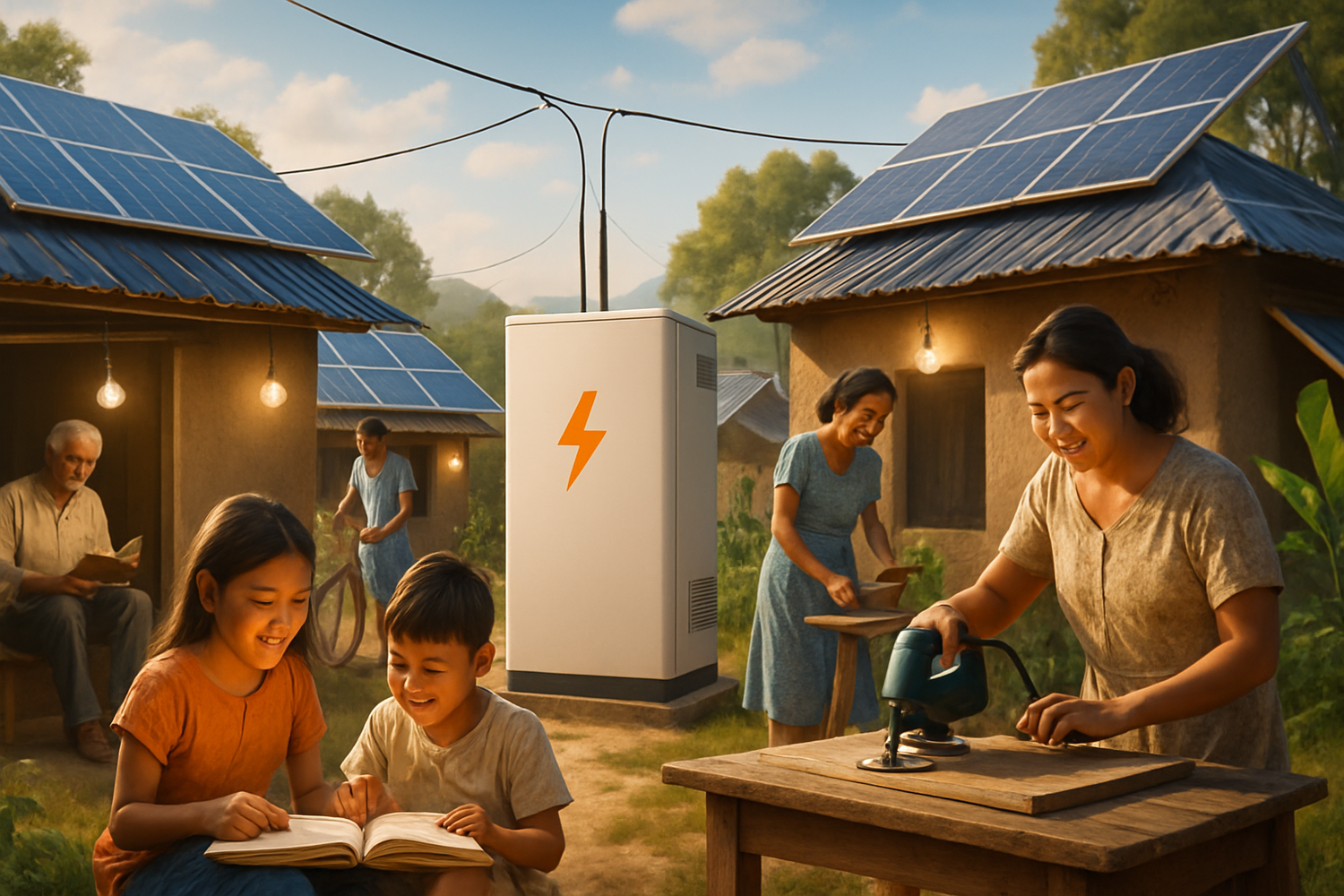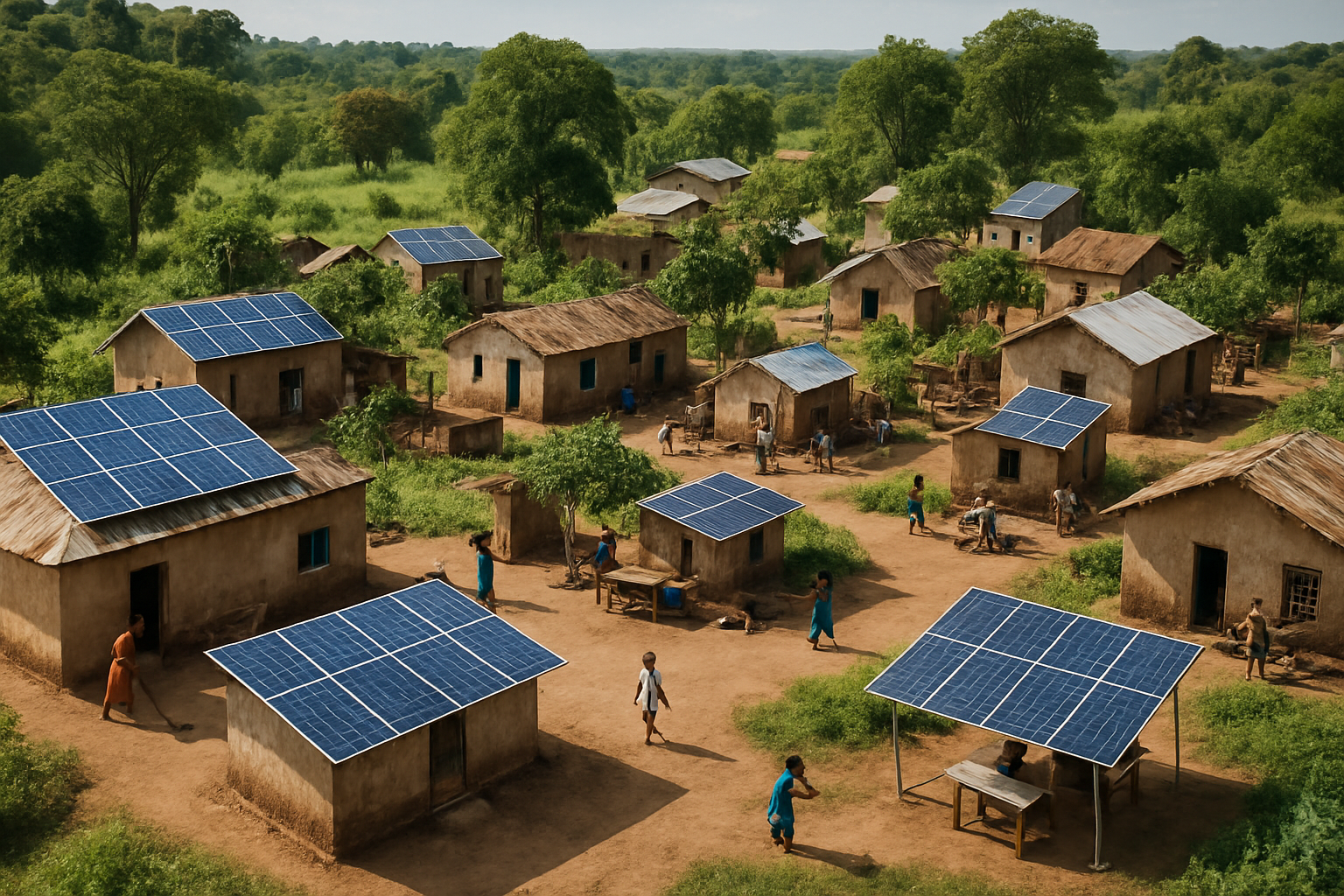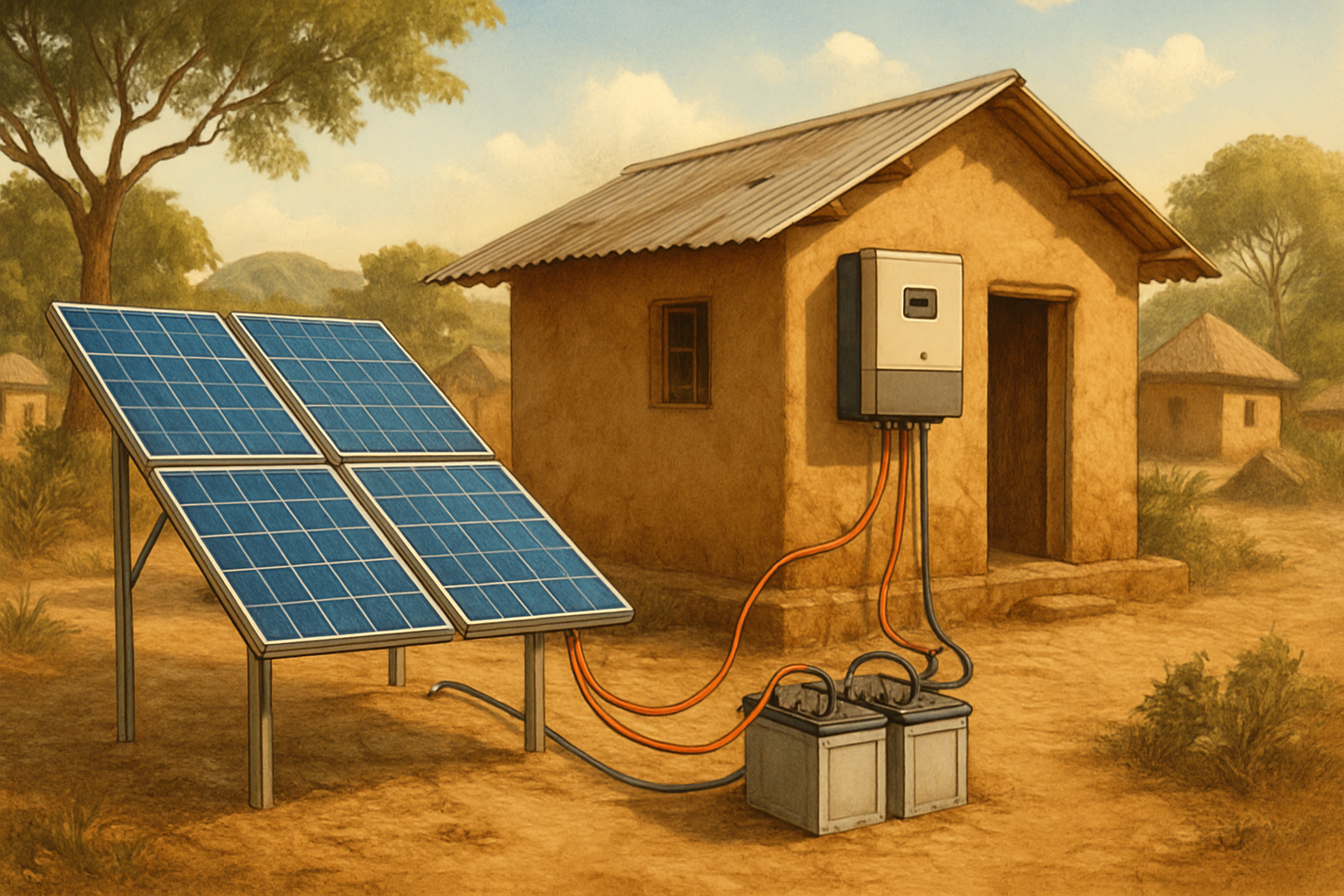Many remote communities face significant challenges accessing reliable electricity. This lack of power impacts daily life, economic growth, and public health. Off-grid solar microgrids offer a powerful solution, bringing clean, consistent energy directly to these underserved areas. They represent more than just an energy source; they are catalysts for socio-economic development. This data brief examines the tangible benefits of village solar microgrids, focusing on their impact on job creation, community health improvements, and the compelling return on investment they provide.

Creating Local Opportunities: Solar Microgrid Jobs
The deployment of village solar microgrids generates substantial local employment. These systems require a workforce for various stages, from initial planning to ongoing maintenance, fostering economic vitality in remote areas.
Direct Employment in Microgrid Development
Off-grid solar PV applications are significant job creators. The Decentralised Solar PV: A Gender Perspective report from IRENA estimates that 16.2 million people gained employment globally in 2022, with 7.1 million jobs specifically from solar PV. Decentralised solar PV, the most widespread technology for off-grid energy generation, brings electricity generation and distribution close to the final consumer. This proximity creates local jobs and business opportunities in rural areas. Roles include site planning, procurement, manufacturing or assembly, installation, operation, and maintenance.
For instance, installing solar panels, wiring homes, and setting up battery storage systems all require skilled labor. Maintaining these systems ensures their long-term functionality, creating sustained employment opportunities. These jobs often require specialized training, empowering community members with new skills and stable incomes.
Economic Growth for Micro-, Small- and Medium-sized Enterprises (MSMEs)
Beyond direct employment, solar microgrids stimulate broader economic growth by enabling micro-, small-, and medium-sized enterprises (MSMEs). Reliable electricity allows businesses to extend operating hours, power equipment, and access digital services. A tailor can use an electric sewing machine, a carpenter can operate power tools, and a small shop can keep lights on longer. This increased productivity and capacity directly translates into higher revenues and expanded services for local businesses.
Access to consistent power also facilitates the growth of new businesses, such as internet cafes, refrigeration services for perishables, or small manufacturing units. These developments diversify local economies and create a ripple effect of prosperity throughout the community.
Enhancing Well-being: Health Benefits of Off-Grid Solar
The transition to off-grid solar energy brings profound health improvements to remote communities, replacing harmful traditional energy sources and bolstering healthcare services.
Improved Health Outcomes
Many remote households rely on kerosene lamps or biomass for lighting and cooking. These sources release harmful indoor air pollutants, contributing to respiratory illnesses, eye problems, and burns. By providing clean, electric lighting, solar microgrids eliminate these indoor air hazards. Children can study safely in the evenings, and families breathe cleaner air.
Furthermore, consistent electricity enables access to clean water solutions, such as electric pumps for wells, reducing waterborne diseases. The overall improvement in living conditions through better lighting and air quality directly enhances community health and safety.
Access to Healthcare Facilities
Off-grid solar microgrids are transformative for healthcare facilities in remote areas. Clinics and health centers can power essential medical equipment, including refrigerators for vaccines and medicines, diagnostic tools, and communication devices. This capability means clinics can offer a wider range of services, store critical supplies safely, and maintain contact with larger medical networks.
Reliable power ensures that medical staff can work effectively at any time, including during emergencies. Microgrids increase the resilience of these facilities, allowing them to operate continuously even when disconnected from a larger grid, as highlighted by the Success Story—New Tool Connects Multiple Microgrids to Increase Community Resilience from Energy.gov. This capability is vital for public health, especially in areas prone to natural disasters or grid outages.
Measuring Success: Return on Investment (ROI) in Village Microgrids
Investing in village solar microgrids yields significant returns, encompassing both financial viability and broader socio-economic benefits that far outweigh initial costs.
Financial Viability and Cost Savings
For remote communities, relying on diesel generators often involves high fuel costs, transportation expenses, and frequent maintenance. Solar microgrids drastically reduce or eliminate these recurring expenditures. While the initial capital investment can be substantial, the long-term operational savings are compelling. Electricity Storage Valuation Framework reports from IRENA detail the economic value of integrated energy storage, which is crucial for microgrid stability and cost-effectiveness.
The cost of solar PV and battery storage continues to decrease, making these solutions increasingly affordable. Communities gain energy independence, shielding them from volatile fossil fuel prices and unreliable supply chains. This financial predictability allows for better long-term planning and resource allocation within the community.
Broader Socio-Economic Returns
The return on investment extends beyond direct financial metrics to encompass profound socio-economic benefits. Reliable electricity boosts educational outcomes, as students can study longer and schools can utilize digital learning tools. It enhances safety and security through street lighting, and improves communication via charging stations for mobile phones.
The Energy.gov article on microgrids emphasizes that these systems increase resilience, reduce greenhouse gas emissions, and support energy independence and security. Microgrids, often incorporating solar energy and batteries, operate independently, providing a steady supply of electricity to critical facilities, homes, and businesses during outages. These collective benefits contribute to a higher quality of life, stronger community cohesion, and sustainable development, representing an invaluable return on investment.
Our Commitment to Sustainable Energy
Our company has extensive experience in the solar and energy storage industry, focusing on delivering reliable and scalable energy solutions. We manufacture high-performance, safe, and dependable lithium iron phosphate (LiFePO4) batteries. Our offerings include integrated home energy storage systems that combine these advanced lithium batteries with hybrid inverters and solar panels. We also specialize in off-grid solar solutions, perfect for homes, farms, and remote cabins, alongside a range of solar inverters that efficiently convert DC power to AC. We empower our clients to achieve true energy independence.
Frequently Asked Questions
What is a village solar microgrid?
A village solar microgrid is a localized power system that uses solar panels to generate electricity and often includes battery storage. It operates independently from the main national grid, providing reliable power to a cluster of homes, businesses, and public facilities within a remote community.
How do solar microgrids create jobs?
Solar microgrids create jobs across various stages: planning, manufacturing, installation, operation, and maintenance. Local community members often receive training for these roles, leading to direct employment and fostering new business opportunities for micro-, small-, and medium-sized enterprises (MSMEs) within the village.
What are the health benefits of off-grid solar?
Off-grid solar improves health by replacing harmful fuels like kerosene, reducing indoor air pollution and respiratory illnesses. It also powers healthcare facilities, enabling refrigeration for vaccines, operation of medical equipment, and consistent lighting for patient care, thereby enhancing overall public health and safety.
Can off-grid solar microgrids really be cost-effective?
Yes, off-grid solar microgrids are highly cost-effective in the long term. While they require an initial investment, they significantly reduce or eliminate ongoing expenses associated with fossil fuels, such as diesel. The decreasing cost of solar and battery technology, combined with the benefits of energy independence and increased community productivity, provides a strong return on investment.





Leave a comment
All comments are moderated before being published.
This site is protected by hCaptcha and the hCaptcha Privacy Policy and Terms of Service apply.